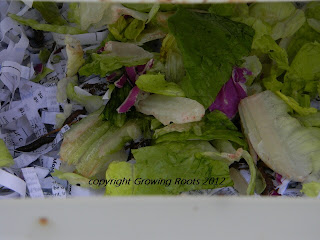Currently we have 19 hens.
Nine New Hampshire Reds: Egg Color: Light Brown to Light Terracotta
Two Easter Eggers: Egg Color: Pale or Mint Green/Blue
Four White Leg Horns: Egg Color: White
Three Production Blacks: Egg Color: White
One Crevecoeur: Egg Color: White (we think this one is a hen - and if so, she will only lay once a week)
We have more (23) pullets (hens) growing, however they won't start egg production until probably mid July. Of the 23 up coming hens, we have:
Easter Eggers (green/blue egg), Brabanters (cream/tinted egg), Faverolles (cream egg), Buff Orpingtons (light brown egg), Australorps (brown egg) and Welsummers (either brown speckled eggs or dark/terracotta brown eggs).
How are your chickens housed?
Inside of the run looking toward the hen house.
We have a coop/hen house for our chickens. This is where they retire for the evenings (roosting), this is also where the hens go to lay their eggs. We also provide a protective run for them to go outdoors in during the major part of the day if they'd like. Our girls are Cage-Free and do get to Free-Range. This makes for happy hens. And when the hens are happy (and not stressed) they lay better. If a hen is stressed for any reason, she may go for a period and not lay. We like to keep our girls happy as much as possible!
Although we do allow our chickens to free-range, we do so under supervision for a few hours in the evenings after all the hens have laid usually until the sun starts to set. We supervise them because we do live in an area where there are potential predators. For example: hawks, owls, fox, coyote, dogs, raccoons, opossum, skunks, and possibly bears, although rarely spotted in Hart County.
What do you feed your chickens?
When free -ranging, our hens love to scratch the pine straw out from under
our azalea bushes to capture those succulent red worms!
our azalea bushes to capture those succulent red worms!
Our chickens diet includes, but is not limited to: a layer feed, grass, table scrapes (such as: veggies, fruit, whole grain and a source of protein), they do get supervised free ranging time to forage for bugs, worms and insects, flax seed (for omega 3's), scratch feed once a day as a snack. They are offered a free choice of oyster shell. Oyster shell is a great source of calcium for our girls and helps to keep the hens egg shells strong and firm. They also get fresh water 2 to 4 times a day, depending on how hot it is and how fast they are drinking it.
This is more for the meat producers, but still want to make clear that our chickens have not (and will not) receive growth hormones.
Remember, anything the chicken intakes (food or otherwise) is broken down and passed along through their eggs. The healthier and more natural their diets, the better the eggs are for you!
You have different color eggs. Do they all taste the same?
Yes, they taste the same! The different color to the egg shells is because of the pigment in the individual chicken. When an egg is forming, and they all form the same, the last thing that happens to the egg is it gets a "paint job". Under normal circumstances (and practices by the farmer) the eggs will have the same nutritional value (if the same size) and taste. The only reason I can think of that might make an egg taste a little different is if the hen ate something with a stout flavor, like garlic. I do know that what a hen eats can affect the color of the egg yolk. So to me, it would make sense about the flavor too as I just mentioned. But it is only a theory, so don't hold me to that.
Get egg nutrition data here (select from the drop down menu, the size of the egg).

.jpg)
.jpg)
.jpg)

